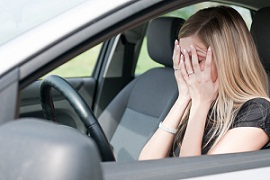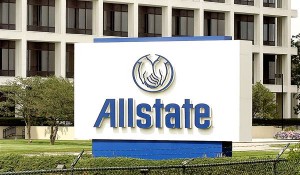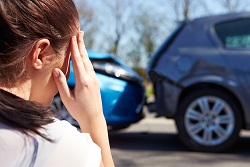Many years ago, a jury awarded my partner Laura Zois’ client $4 million in a survival action claim. The sole evidence — the SOLE evidence — presented to the jury was that the decedent said “Oh s—!” before impact which caused his immediate death. Since that case, I have had a very aggressive view when it comes to pushing these claims. Because that case and other cases I have seen and tried show that juries take the most remote fear of grave harm or death as serious as they do any conscious pain and suffering. I think too many plaintiffs’ attorneys in Maryland are too quick to accept the premise that the victim’s estate cannot make a pre-impact fright or conscious pain and suffering claim. This post is about Maryland law in both pre-impact freight and conscious pain and suffering cases and why I think this helps the family’s victim recover substantial damages in wrongful death and survival action claims in Maryland.
Articles Posted in Auto Accidents
New Maryland Appellate Opinion | Asphalt and Concrete Services v. Perry
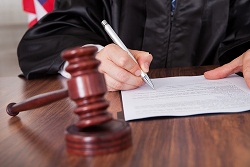 The Maryland Court of Special Appeals handed down an interesting opinion in Asphalt and Concrete Services v. Perry, reversing a half-million dollar verdict. This case is a cautionary tale for lawyers who want to get every possible thing they can, in order to make the defendant look bad. I understand the urge, believe me. But sometimes you are just asking for an appeal that will get your case reversed. This is an opinion every Maryland personal injury lawyer — on both sides of the aisle — should read and keep in the back of their minds. This case also has some good law and bad law for plaintiffs’ lawyers that is worth knowing.
The Maryland Court of Special Appeals handed down an interesting opinion in Asphalt and Concrete Services v. Perry, reversing a half-million dollar verdict. This case is a cautionary tale for lawyers who want to get every possible thing they can, in order to make the defendant look bad. I understand the urge, believe me. But sometimes you are just asking for an appeal that will get your case reversed. This is an opinion every Maryland personal injury lawyer — on both sides of the aisle — should read and keep in the back of their minds. This case also has some good law and bad law for plaintiffs’ lawyers that is worth knowing.
What Are the Most Common Motor Vehicle Accident Injuries?
I was looking today at some interesting statistics on the most frequent types of car and other motor vehicle accident injuries that go to trial. It breaks down like this:
- Back strains: 33%
- Disc injuries: 15%
- Spinal nerve injuries: 10%
- Head injuries: 10%
- Shoulder injuries: 4%
- Knee injuries: 3%
- Brain damage: 3%
- Vertebra injuries: 3%
- Everything else (including wrongful death): 2%
At Miller & Zois, we do not handle many simple back strain cases so that 33% probably gets knocked by at 5%. A lot of our cases come from attorney referrals from other personal injury lawyers who are keeping these types of cases for themselves, as they well should. Our website constantly underscores “serious injury only” which keeps away a lot of those smaller cases. We do this because our business model which requires us to work up every case like it is our only case (self-serving, sure, but true) does not work well with smaller cases economically.
Presumption of Negligence in Maryland Car Accidents | New Opinion
The Maryland Court of Special Appeals decided a chain reaction automobile tort case last week in Cooper v. Singleton that leaves me confused about the current state of Maryland law as to how we communicate our presumption of negligence rule to juries in rear-end collisions… and hoping the Maryland high court steps in to clear up the confusion.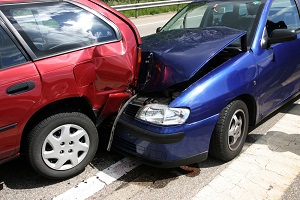
What Does Allstate Pay Lawyers Defending Auto Cases?
The answer in Maryland appears to be around $135 an hour for a senior lawyer.
Here’s how I know. One of my colleagues here was in court yesterday and saw a motions hearing. This issue was unbelievably petty if I say so myself. Plaintiff’s lawyer failed to show for a deposition because he overslept, forgot, or something. Totally innocent. He said he was sorry. Allstate’s counsel – outside counsel, not in-house – wanted $500 in sanctions for having to appear at the deposition. Why so petty? I can’t tell you. But I know that while there are a lot of insurance defense lawyers that are wonderful people, it is fair to say that they blow past all other professions in the number of people per capita who would say, “I’ve enjoyed this dinner with you; now let’s go through this check line by line and figure out who owes what” after dinner with the neighbors.
Speed and Red Light Cameras in Maryland | A Look at the Debate
My position has long been that speed and red light cameras at least probably save lives. Why? I’ve painstakingly dug through the research, analyzed the underlying data, and made a thoughtful and informed conclusion.
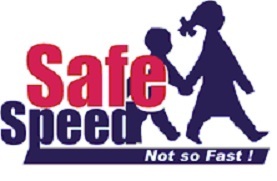 Okay, that didn’t happen. What I read instead was a newspaper article on a study by the Insurance Institute for Highway Safety that found that traffic deaths at speed and red light intersections dropped by 26 percent. So I concluded from this that the study was unbiased (probably because the IIHS has a reliable sounding name) and took the leap of faith that all cameras must be good.
Okay, that didn’t happen. What I read instead was a newspaper article on a study by the Insurance Institute for Highway Safety that found that traffic deaths at speed and red light intersections dropped by 26 percent. So I concluded from this that the study was unbiased (probably because the IIHS has a reliable sounding name) and took the leap of faith that all cameras must be good.
Could this be flawed logic? Of course, But this is the way the sausage gets made for all of us when we are just coming up with a random opinion where our final decision really does not matter to anyone. We all do it.
So I really don’t know the answer. But I know that public support for these cameras is now being held together with Scotch tape and the magic of children’s laughter. Why? Because everyone has inspected the studies? Get serious. The contractors who run these cameras – and the systems designed to compensate them – are fatally flawed. Continue reading
How Safe Is Talking on the Phone While Driving?
We can all agree that texting while driving is a death wish. We don’t need an educational campaign. Everyone knows this now. The question is just whether you are stupid enough to risk your life and mine.
The bigger question engendering more real debate is cell phone use in general. I have always been in the camp that the big issue is distracted driving generally. I don’t use the phone when I’m driving with my kids in the car. (No, I can’t explain why I don’t extend this to your kids who are on the road with me when I drive alone.)
Should We Lower BAC for Drunk Driving in Maryland?
Today, the National Transportation Safety Board (NTSB) said we should lower the blood-alcohol limit from .08, the current standard, to .05. The NTSB argues that the U.S. is too lenient with drunk driving and wants the U.S. to adopt the same standard as other countries, such as those in Europe.
Data from the National Highway Traffic Safety Administration tells us what we have known for a zillion years: alcohol plays a role in nearly one-third of traffic deaths in America.
But the NTSB tells us something new, providing data that the risk of a crash is reduced by half when the definition of “drunk driving” encompasses the .05 standard instead of the .08 standard. Depending on body size, the difference between .08 and .05 is one to two drinks over a three-hour time span.
It is hard not to cut to the chase on this. There are 12,000 deaths, give or take, a year in this country from drunk driving. Now imagine in your mind 6,000 people in a room that could have been saved by everyone having fewer drinks. Then imagine everyone who loved those 6,000 people in a room. I have to think the NTSB is on the right side of history on this.
(I just pulled a minor trick there. The NTSB says “car crashes” and I turned that into “car crash fatalities.” But if you reduce that 6,000 to 3,000, does it detract from the point I’m making?)
We had been reducing drunk driving deaths for a while, but we have hit a stopping point. We either need to increase penalties or reduce the BAC. Those, it seems to me, are the two weapons we have in our arsenal to get past the bottleneck.
This idea that a few drinks do not affect driving is crazy. Play a video game and try to get your high score on two beers. You just can’t do it. Alcohol is dose-responsive. Every little bit makes you a little less competent to drive.
Maryland Toughens Handheld Phone Ban
The Maryland General Assembly passed a bill this week which would make talking on a handheld cellphone while driving a vehicle a primary offense. If the bill is signed by Governor O’Malley, as expected, a police officer could pull a driver over under this bill for talking on a handheld while their vehicle is in motion. The bill would allow you that quick phone call at a stoplight and you can still use your GPS on your phone.
 A first handheld offense would be punishable by a fine up to $75 fine. A second offense could be $125, and a third could be $175. A fourth offense? Geez, do we need to even figure that out? I think if you drive through the city screaming “Hey, look, no seat belt” you still are probably not going to get charged with this three times.
A first handheld offense would be punishable by a fine up to $75 fine. A second offense could be $125, and a third could be $175. A fourth offense? Geez, do we need to even figure that out? I think if you drive through the city screaming “Hey, look, no seat belt” you still are probably not going to get charged with this three times.
This is the progression of things. It is easier to pass the bill as a secondary offense and then bump it up in a few years. We are sheep and accept change a little better that way.
Speed Cameras in Baltimore County Take a Hit
A Baltimore County Circuit Court judge ruled last week that Baltimore County’s contract with its speed camera vendor is illegal, because it allows the contractor to get a cut of every ticket generated. Although Judge Susan M. Souder’s ruling dismissed only a single ticket, this decision is believed to be the first time a judge has ruled against the legality of this so-called “bounty system” practice.
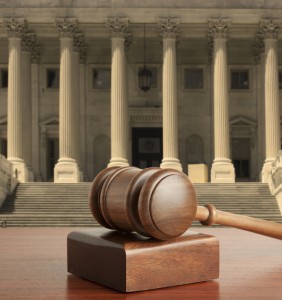 Here, Baltimore County’s contractor, ACS Xerox, received a whopping $19 from every $40 ticket. As you might imagine, the bounty system has raised many objections because it incentivizes contractors to maximize the number of tickets issued, which can lead to mistakenly generated tickets. In one instance, a motorist was cited for traveling 57 mph in a 25 mph zone although the driver was sitting still.
Here, Baltimore County’s contractor, ACS Xerox, received a whopping $19 from every $40 ticket. As you might imagine, the bounty system has raised many objections because it incentivizes contractors to maximize the number of tickets issued, which can lead to mistakenly generated tickets. In one instance, a motorist was cited for traveling 57 mph in a 25 mph zone although the driver was sitting still.
Maryland law, however, specifically seeks to eliminate profit incentives by banning bounty systems. Transportation Article § 21-810(j)(2) of the Maryland Annotated Code states, “If a contractor operates a speed monitoring system on behalf of a local jurisdiction, the contractor’s fee may not be contingent on the number of citations issued or paid.” However, this restriction is effectively nullified as long as contracts avoid using the term “operate.” The Office of the Attorney General even provided an advisory letter in 2008 instructing Montgomery County to change the wording of its contract to specify that the county, rather than the contractor, operated the speed cameras, thus skirting the restriction.
The present case is not the only lawsuit that has been introduced. The bounty system previously ignited a legal clash in 2008 when ticket recipients sued Montgomery County and several municipalities in the county. The Maryland Court of Appeals, however, ruled that the plaintiffs did not have the power to sue under the law, but did not decide whether governments can pay contractors a contingency fee based on the number of tickets generated by the speed cameras. Continue reading
 Maryland Injury Law Center
Maryland Injury Law Center


